I grow a few different varieties of strawberries every year but the underdogs of the garden—and the ones I always look forward to finding and picking—are my Yellow Wonder alpine strawberries (Fragaria vesca).
Alpine strawberries don’t get all the fanfare of market strawberries (which typically produce large red berries), but these Yellow Wonders are just about the most perfect patio plant you could hope for. Green, lush, prolific, and full of petite, melt-in-your-mouth berries bursting with a flavor that’s hard to pin down.
I liken them to cotton candy, but with added notes of pineapple and rose. They’re complex and intensely aromatic. They’re full of sweetness and lack the tartness of commercially grown strawberries which, in my opinion, prove that bigger is not always better.
Unlike other types of strawberries like Junebearers, which love to spread, most cultivated alpine strawberries don’t sprout runners. Where you plant them is where they’ll stay, making them ideal for small spaces such as balconies and borders.
Related: How far apart you should plant strawberries for the biggest, juiciest berries

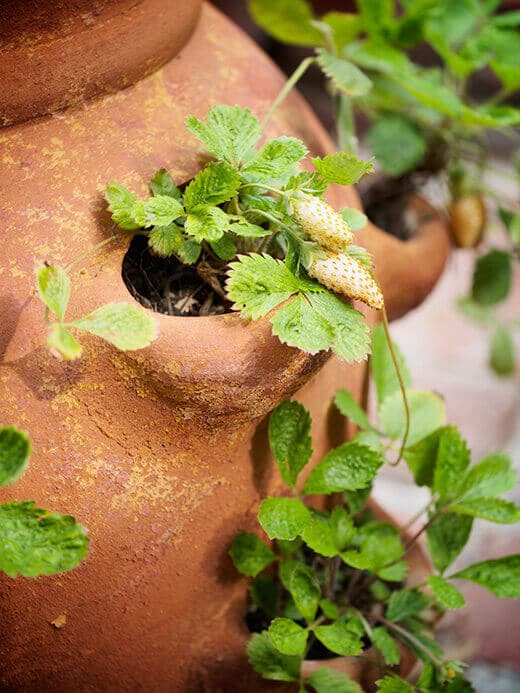
They concentrate all of their energy into their fruits, which also grow smaller than cultivated market varieties—no more than an inch long with pointed ends, and almost conical in shape. The plant itself is a compact perennial, growing 8 to 10 inches tall with bright green foliage and delicate white flowers.
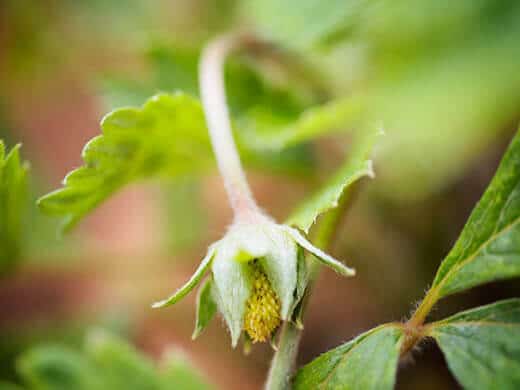
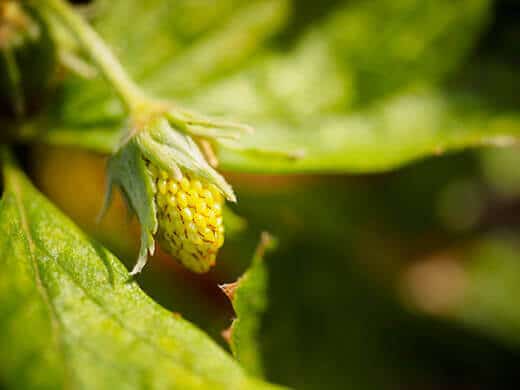
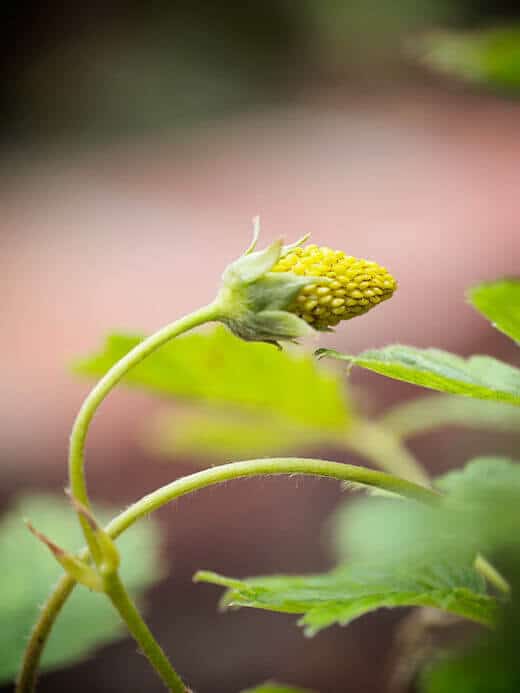
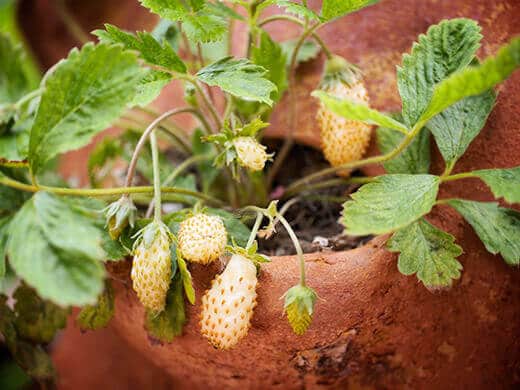
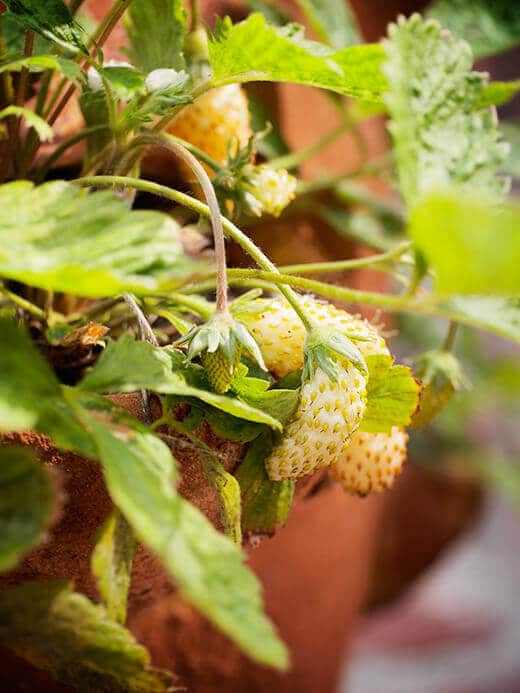
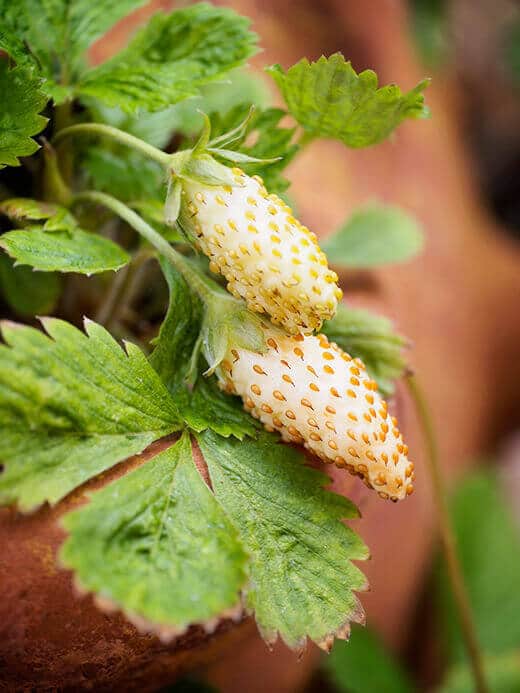
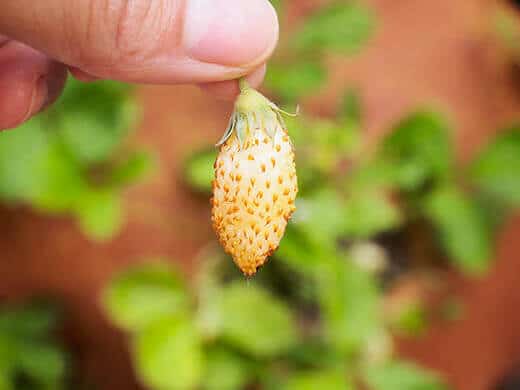
To chefs, alpine strawberries are sometimes called gourmet strawberries because of their refined texture and taste. You’ll probably never find alpine strawberries in a supermarket, because they’re simply too fragile to make the trip through modern processing and packaging. The berries go from green to ripe to overripe in a blink, and their flesh is softer than what you might be more accustomed to.
But pick them at the right time, when the flesh has a little give and the fruit readily separates from its green cap, and one bite of an alpine strawberry will make you want to rip up your other strawberries and plant only alpines in their place.
Today’s alpine strawberries (also known as woodland strawberries or wild strawberries) come from the Fragaria vesca berries that were indigenous to ancient Persia. Some archaeological evidence even dates them back to the Stone Age, when humans were first documented as having eaten them.
In fact, before our supermarkets were filled with baskets of red, large, firm, tart and sometimes tasteless berries, the only strawberries that existed were wild woodland strawberries that ranged in color from white to red.
Fragaria vesca was then introduced to Europe, where wide cultivation led to several varieties of strongly-flavored alpine strawberries that didn’t stray too far from their predecessor. They eventually fell out of favor in the 18th century when garden strawberries (what we eat today) showed greater promise in the variation for breeding and size of the fruit.
Alpine strawberry plants are day-neutral, meaning they start to flower and fruit in spring and keep producing until the first hard frost. It totally delights me to pick a handful of berries in June (which usually never make it back into the house before I gobble them all down) and then to see the plants still laden with berries in October (and sometimes even November!).
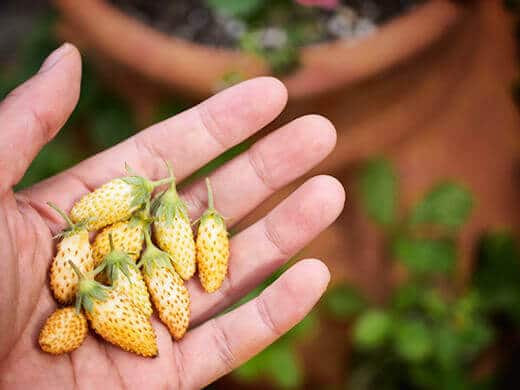
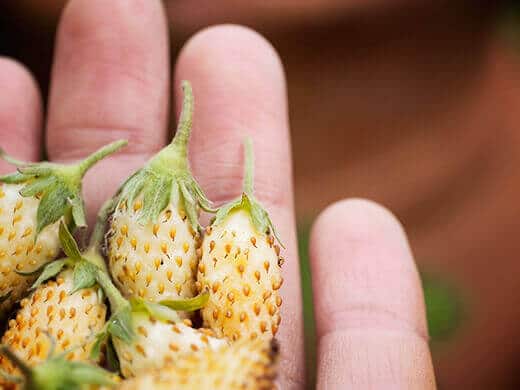
I’m partial to yellow alpines because I’ve found that they’re a little sweeter than red alpines, and their pale color, combined with an unusual shape, makes them a standout against my red garden strawberries. As a bonus for those who have to fend off birds in their gardens, it’s said that birds usually ignore yellow berries because they think they’re unripe.
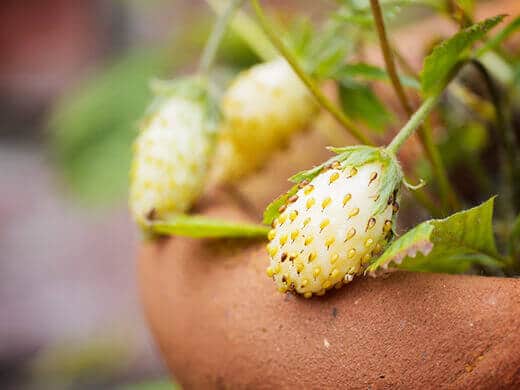
Alpine strawberries are cool-weather plants, so in mild climates, you can start seeds indoors in the summer and transplant seedlings outside in the fall. By spring, the first flowers will appear and you’ll have perfect little fruit to top a bowl of yogurt or simply eat out of hand. Grow multiple plants, and you’ll have enough to adorn a cake next year.
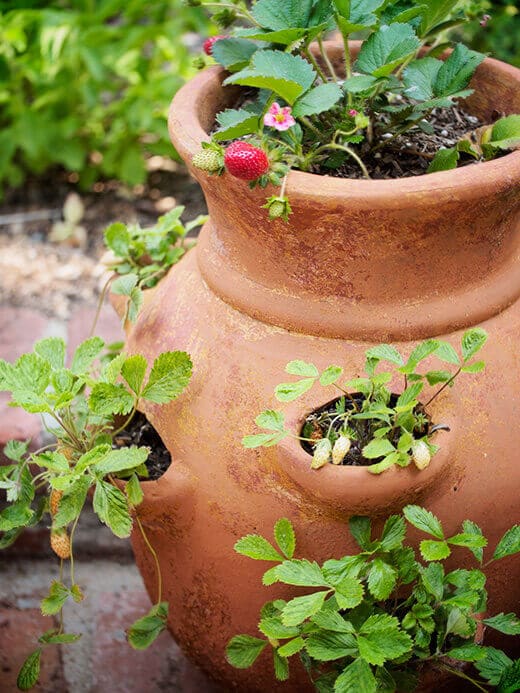
The plants reseed very easily and I’ve often taken a few overripe, nearly-dried berries that were hiding in the foliage and pressed them into the soil elsewhere in the garden. Let them go through a cold winter and in spring, a few strawberry seedlings will sprout in their place.
You can also save alpine strawberry seeds (from homegrown plants or, if you’re lucky, out in the wild) by collecting them from the skin and freezing them for a month to condition them. Afterward, store the seeds in a cool, dark and dry place and sow in spring or fall.
Strawberry plants are perennials. They grow year after year but fruit production starts to decline with age, so they should be replaced every five years or so. If you’re growing them for fruit, treat them like a crop: the more space or larger container you give them, the more productive they’ll be.
But you can also plant them as an ornamental or an edible ground cover, and enjoy the fruits as a perk!


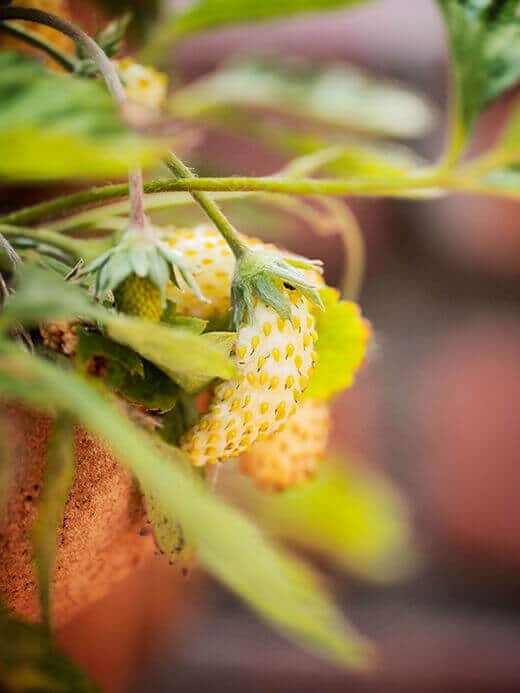













Hi, I have a seed packet of alpine strawberries but haven’t managed to germinate them at all! It’s a new purchase so it’s not expired. Any tips?
I have a couple hundred Yellow Wonder strawberry plants in my garden. They were easy to germinate, but the plants are not very productive and don’t handle warm weather very well. The berries are tasty, but not that much better than regular strawberries. I don’t recommend this plant.
Interesting that your experience has been so different from mine. I grew these strawberries in Southern California, where it’s warm year-round, and they thrived with great, super sweet flavor. I wonder if the difference comes from the soil composition, fertilizer, seed used…?
I’ve been looking for Alpine Strawberry starts and seeds for months and haven’t been able to find them. I live in Orange County, CA. Can you share where you found your Alpines?
My Yellow Wonder seeds were from rareseeds.com and they tend to go in and out of stock throughout the year. I believe there’s usually some type of alpine strawberry available, if not Yellow Wonder.
Wait, however, your Bio tells that you live in the Central part of Oregon. So, are you in SoCal or in Oregon growing these berries?
I have my yard full of alpine strawberries, but they are red, not yellow. I use them as a ground cover, and fruits, when they have fruits. They are somewhat invasive and spread. I am in the Chicago area and they produce only from the end of May to the end of June. I wonder if this has to do with the variety I have or with the climate. I have never heard of everbearing alpine strawberries. I have to look for seeds for this specific variety. Very interesting!
If you like sweet and juicy berries: Yellow Wonder Alpine Strawberries http://t.co/y4U38IdliF #gardenchat < TY for RT! @FredJaicks
I grow some of these berries and I adore them also! Thank you for sharing more information on them :)!
How Sweet It Is: Yellow Wonder Alpine Strawberries http://t.co/e8kgvrhgdX from Garden Betty by Linda Ly
RT @theGardenBetty: If you like sweet and juicy berries, start growing these in the fall. Yellow Wonder Alpine Strawberries http://t.co/y4U…
If you like sweet and juicy berries, start growing these in the fall. Yellow Wonder Alpine Strawberries http://t.co/y4U38IdliF #gardenchat
Fresh strawberries grown at home are the best! I had two beds of strawberries … the only problem I had was, all the critters in my area thought they tasted great also … it was constant battle between me, the birds, squirrels and the occasional chipmunk.
I removed the beds during expansion, but plan on bringing strawberries back into the fold in pots and containers.
Perhaps these yellow strawberries will help with some of your critter problems!
maybe … will definitely give them a go